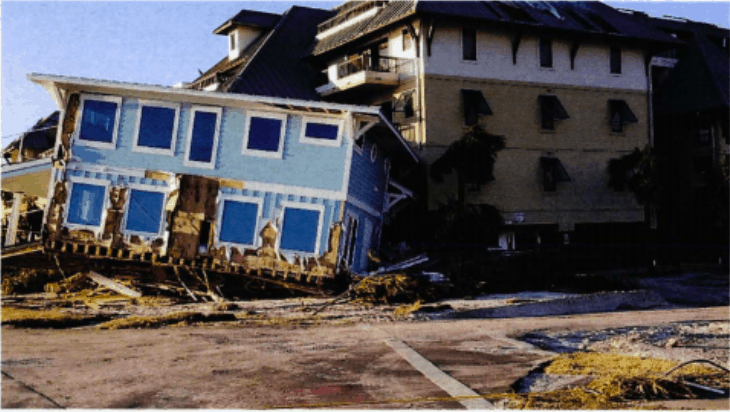
The age of Panhandle homes served as the greatest predictor of whether Hurricane Michael would flatten structures, witnesses told the House Business and Professions Subcommittee Wednesday.
State officials surveying storm damage found an enormous difference in sustained damage for homes built under modern building codes. Dr. David Prevatt, a civil engineering professor at the University of Florida, said differences were stark for newly developed homes.
“Those built under older codes were destroyed or severely damaged,” he said, “where new codes, [the storm] caused minor or no damage.”
Prevatt showed a widely shared New York Times photo of a single, newer home standing in a neighborhood of buildings washed away by storm surge.
Then he showed a lesser viewed image, one of several homes in a nearby Mexico Beach neighborhood, where all were built in 2016 or later. “They may have lost a shingle or two,” Prevatt noted.
Michael, which made landfall as a Category 5 storm, caused more damage than most. But the damage difference between older and newer homes is consistent with past storm studies in Florida, Prevatt said.
State Rep. Matt Willhite, a Palm Beach County Democrat, raised questions about whether climate change should impact rebuilding efforts.
While Prevatt focused on damage, he did suggest residents and communities may need to consider whether rebuilding on the coast makes the most sense. The area around Mexico Beach gets hit by a named storm on average once every six years, Prevatt said.
“The notion you have to live exactly on the coastline may not be the right one,” he said.
Retrofitting buildings can prove more time-consuming and be costly, Prevatt noted, so building codes in many ways brace for coming decades.
Researchers said many Panhandle residents are willing to invest right now in retrofits to bring homes up to modern code. But based on history, Prevatt said that sentiment declines about a year after major storms make landfall.
So what improvements still need to be made? State Rep. Randy Fine, a Brevard County Republican, noted he lost a home to Hurricane Matthew, not because it crumbled in the storm but because of water intrusion in the home.
Prevatt said an understanding of that issue may be the greatest hole in Florida’s building codes today.
He said a four-foot hole in a home, through a window or roof, for example, can allow enough water in to destroy drywall, feed mold and basically total a house. Better vinyl sealing and roof regulations could help prevent such damage.




One comment
bill lazar
September 19, 2019 at 9:49 pm
A number of homes that survived with less damage were built by Habitat for Humanity, sometimes just paying attention to doing it right the first time counts for a lot. The HUD disaster funds, which eventually will arrive, and are great sources for upgrading and addressing some of these concerns. The hardest part for many low income seniors and working families is the time it’s taking to stabilize their homes and their lives. I’m not sure why our “rainy day” fund couldn’t be used to jumpstart this rebuilding effort before too many give up, or lose their homes. It’s a great opportunity to start up some construction job training programs at the same time.
Comments are closed.